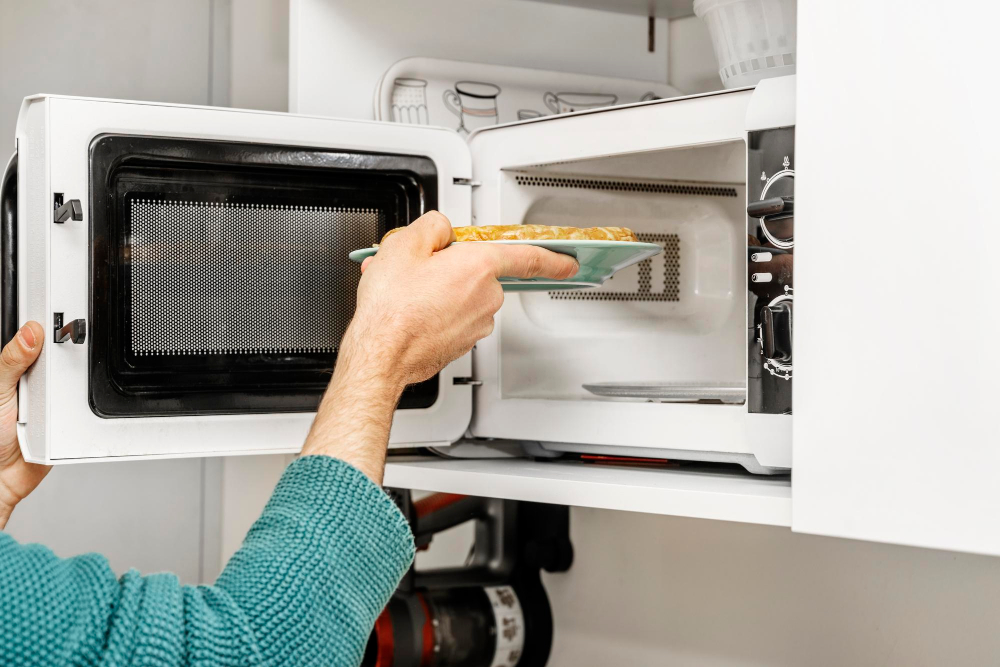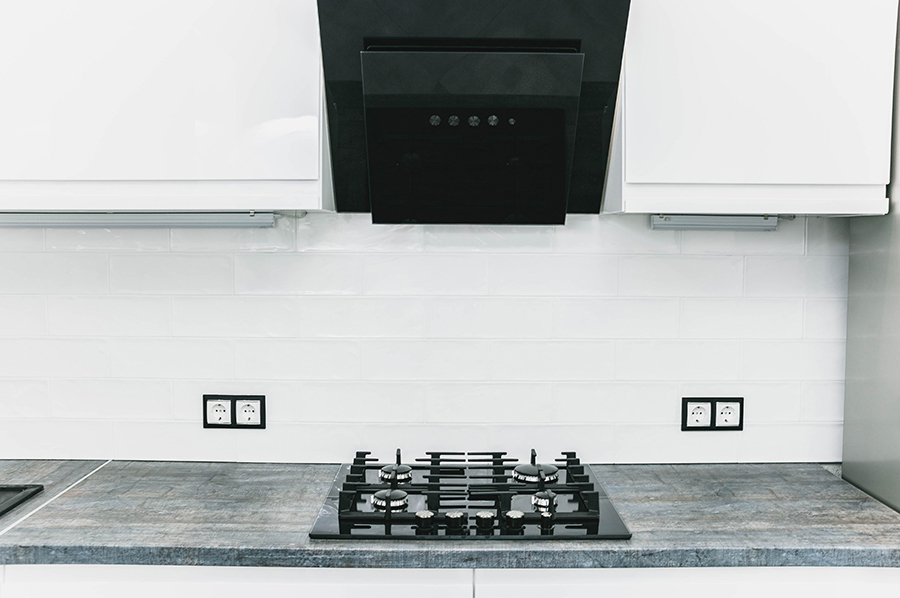Last updated on
Discover the key differences between a range hood and an over-the-range microwave, as we delve into their unique features, benefits, and suitability for your kitchen needs.
When it comes to kitchen appliances, the range hood and over-the-range microwave are two of the most important ones. Both serve a crucial purpose in keeping your kitchen clean and smoke-free while cooking.
However, choosing between these two can be a daunting task for many homeowners. While the range hood has been around for decades, the over-the-range microwave has gained popularity in recent years due to its dual functionality.
Key takeaways:
- Range hoods are effective at ventilating kitchens and improving air quality, but can be hard to clean.
- Over-the-Range (OTR) microwaves combine a microwave and range hood, offering space-saving and versatile cooking options, but may lack powerful ventilation and require complex installation.
- Range hoods are more powerful at removing smoke and steam, particularly for high-heat cooking, while OTR microwaves are suitable for smaller spaces but need regular filter changes.
- OTR microwaves function as cooking appliances, while range hoods are primarily for ventilation, with some high-end models featuring warming lamps or heat sensors.
- Installing a range hood requires professional help due to ductwork requirements, while installing an OTR microwave is simpler but may need additional electrical work.
What's Inside
Range Hood Overview

Range hoods are a popular choice for homeowners who prioritize proper ventilation in their kitchens. A range hood is an appliance that sits above your stove and helps to remove smoke, steam, and cooking odors from the air.
It works by drawing in the polluted air through a filter or series of filters before expelling it outside or recirculating it back into your kitchen after cleaning.
One of the main benefits of using a range hood is its ability to improve indoor air quality by removing harmful pollutants such as carbon monoxide, nitrogen dioxide, and other volatile organic compounds (VOCs) produced during cooking. Range hoods can help prevent grease buildup on surfaces around your stove which can be difficult to clean over time.
There are different types of range hoods available on the market today including wall-mounted models that attach directly onto walls behind stoves as well as island models designed for use with cooktops located within islands. Range hoods come in various sizes ranging from 30 inches up to 60 inches wide depending on how much space you have available above your stove.
Over-the-Range Microwave Overview

They serve as both a microwave and a range hood, which can be an excellent space-saving solution for smaller kitchens. OTR microwaves are typically installed above the stove and come equipped with ventilation fans that help remove smoke, steam, and cooking odors from your kitchen while you cook.
One of the main advantages of an OTR microwave is its convenience factor. It eliminates the need for a separate range hood or countertop microwave since it serves both functions in one appliance.
This not only saves counter space but also frees up valuable cabinet storage.
Another benefit of an OTR microwave is its versatility when it comes to cooking options. Many models come with features like convection cooking, grilling elements, or even built-in sensors that adjust power levels based on food moisture levels automatically.
However, there are some downsides to consider before choosing this option over a traditional range hood or standalone microwave unit. For example:
- The installation process can be more complicated than other options.
- The ventilation capabilities may not be as powerful as those found in dedicated range hoods.
- If your current setup doesn’t include proper electrical wiring above your stove area already installed by professionals such as electricians then additional costs will incur during installation
Ventilation Capabilities

A range hood is designed to remove smoke, steam, and cooking odors from your kitchen by venting them outside through ductwork. On the other hand, an over-the-range microwave has a built-in fan that recirculates air through charcoal filters before releasing it back into your kitchen.
While both options can effectively remove smoke and cooking odors from your kitchen, there are some key differences in their performance. Range hoods tend to be more powerful than over-the-range microwaves when it comes to removing smoke and steam quickly.
This makes them ideal for homeowners who do a lot of high-heat cooking or have large kitchens with multiple burners.
In contrast, if you have limited space in your kitchen or don’t cook frequently at high heat levels, then an over-the-range microwave may be sufficient for your needs. However, keep in mind that these microwaves require regular filter replacements every six months to maintain optimal performance.
Cooking Features Comparison

While a range hood is primarily designed for ventilation purposes, an over-the-range microwave can also function as a cooking appliance. Most models come with built-in heating elements and convection settings that allow you to cook or bake food quickly and efficiently.
On the other hand, while some high-end range hoods may have additional features such as warming lamps or heat sensors, they are not designed for actual cooking. Instead, their primary focus is on removing smoke and odors from your kitchen.
Space Utilization

A range hood typically hangs above your cooktop, taking up valuable overhead space. On the other hand, an over-the-range microwave combines two appliances into one by serving as both a cooking appliance and ventilation system while sitting on top of your stove.
If you have limited counter or cabinet space in your kitchen, then choosing an over-the-range microwave might be more beneficial for you since it frees up some much-needed countertop real estate. However, if you prefer to have more open overhead storage or want to showcase decorative elements like pendant lighting fixtures above the stove area, then a range hood may be better suited for you.
Ultimately it comes down to personal preference and what works best with the layout of your kitchen.
Installation Differences

Installing a range hood requires professional help, as it involves cutting holes in your kitchen wall or ceiling to accommodate the ductwork. This can be time-consuming and expensive, but it ensures that all smoke and fumes are vented outside.
On the other hand, installing an over-the-range microwave is relatively easy and can be done by anyone with basic DIY skills. It simply requires mounting brackets on your kitchen wall above your stove or cooktop.
However, you’ll need to ensure that there’s enough space for ventilation purposes.
It’s important to note that if you’re replacing one appliance with another (e.g., replacing a range hood with an over-the-range microwave), you may need additional electrical work done by professionals since microwaves require more power than hoods do.
Energy Efficiency

Both range hoods and over-the-range microwaves have different energy consumption levels that can impact your electricity bill. Range hoods are generally more energy-efficient than over-the-range microwaves because they don’t require as much power to operate.
Range hoods typically use between 100-200 watts of power while in operation, whereas over-the-range microwaves can consume up to 1,000 watts or more when cooking food. This means that if you’re looking for a way to save on your electricity bill, a range hood may be the better option.
However, some newer models of over-the-range microwaves come with advanced features like sensor cooking and automatic shut-off which help reduce their overall energy consumption. So if you’re considering an over-the-range microwave but want something more efficient than older models on the market today – look for these types of features!
Cost Analysis

The average cost of a range hood installation is between $400 and $1,550, with an average of $750. On the other hand, the cost of an over-the-range microwave typically ranges from $150 to $600.
These costs can vary significantly based on factors such as the specific model chosen, the features it includes, the brand, and the costs associated with installation or removal of existing appliances. For example, more high-end models of either appliance will be at the upper end of the price range, and if professional installation is required, that could add to the total cost.
Please note that these are rough averages, and actual prices can vary significantly based on these and other factors. It is always a good idea to get several quotes before making a decision.
It’s important to consider the initial purchase price and long-term operating costs when making your decision. Range hoods typically use less energy than over-the-range microwaves since they don’t have cooking capabilities; however if you cook frequently using gas stoves then having a powerful exhaust fan becomes necessary which could increase electricity bills.
Ultimately your budget will play an essential role in determining whether you opt for a range hood or an over-the-microwave oven as both options offer unique benefits at different price points.




